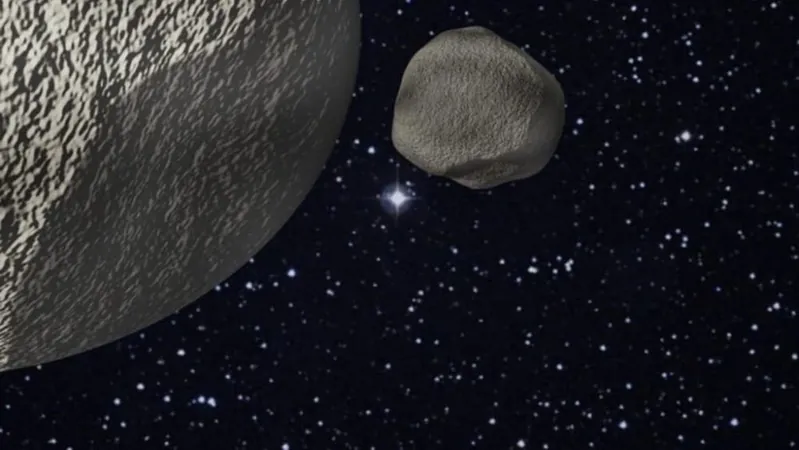
Astronomers Discover Ancient Stellar Encounter Through TNO Colors
2025-07-15
Author: Olivia
Unlocking the Secrets of Trans-Neptunian Objects
Trans-Neptunian Objects (TNOs) are enigmatic celestial bodies lurking in the far reaches of our Solar System. These dwarf planets exist beyond Neptune, with Pluto being the most famous—once considered the ninth planet before its reclassification.
Relics of the Early Solar System
Emerging from the cold, primordial disk of gas and dust, TNOs are ancient relics from the chaotic inception of our Solar System. As colossal planets shifted, gravitational forces sculpted the orbits of these distant bodies, leading many to adopt eccentric paths inclined relative to the solar plane.
The Colorful Mystery
What’s particularly intriguing is the vibrant palette of TNOs, ranging from deep reds to muted greys. Recent surveys have suggested that this color variation is not random, but rather linked to their orbital characteristics and the distinct chemical compositions present on their surfaces, including tholins, which give Pluto its reddish hue.
A Stellar Flyby: A New Hypothesis
Cutting-edge research published in The Astrophysical Journal Letters posits that these odd trajectories and color distributions may be the result of a close encounter with another star. Led by Prof. Dr. Susanne Pfalzner from Germany’s Julich Supercomputing Center, the study proposes that such a flyby occurred early in the Solar System’s history.
The authors theorize that the dense stellar environment during that period—where stars crowded together far more than they do today—would have made encounters like this more likely.
Simulations Illuminate the Past
To test their hypothesis, researchers employed supercomputer simulations to model a flyby of a star with 0.8 solar masses moving past a disk filled with 10,000 to 50,000 particle representations of TNOs. They proposed that as the perturber star approached, its gravitational influence dramatically altered the orbits of the TNOs, creating a spiral arm structure.
Correlating Colors and Orbits
The simulations revealed that different colors corresponded to distinct orbital characteristics, reinforcing the notion that the dynamics of TNOs are closely tied to their colors. Red TNOs typically resided in low-inclination orbits, retaining more of their primordial features, whereas the blues and greens dominated higher inclinations.
Forecasting Future Discoveries
Anticipation grows as the Vera Rubin Observatory prepares for its decade-long Legacy Survey of Space and Time (LSST), expected to potentially double the known count of TNOs. Excitingly, researchers aim to predict the characteristics of these newly detectable TNOs based on their findings, with a focus on how they might appear in the survey.
The Colors Tell the Story of TNO Evolution
Ultimately, the diverse hues of TNOs serve as crucial indicators of their origins, chemical compositions, and the dynamic history of our Solar System. This groundbreaking research not only clarifies how these distant objects ended up in their unusual orbits but also strengthens the case for a stellar flyby as a pivotal event in shaping the TNO population.
The ongoing quest to decode the history of these ancient objects promises to enrich our understanding of the cosmos and the forces that shaped it.









 Brasil (PT)
Brasil (PT)
 Canada (EN)
Canada (EN)
 Chile (ES)
Chile (ES)
 Česko (CS)
Česko (CS)
 대한민국 (KO)
대한민국 (KO)
 España (ES)
España (ES)
 France (FR)
France (FR)
 Hong Kong (EN)
Hong Kong (EN)
 Italia (IT)
Italia (IT)
 日本 (JA)
日本 (JA)
 Magyarország (HU)
Magyarország (HU)
 Norge (NO)
Norge (NO)
 Polska (PL)
Polska (PL)
 Schweiz (DE)
Schweiz (DE)
 Singapore (EN)
Singapore (EN)
 Sverige (SV)
Sverige (SV)
 Suomi (FI)
Suomi (FI)
 Türkiye (TR)
Türkiye (TR)
 الإمارات العربية المتحدة (AR)
الإمارات العربية المتحدة (AR)